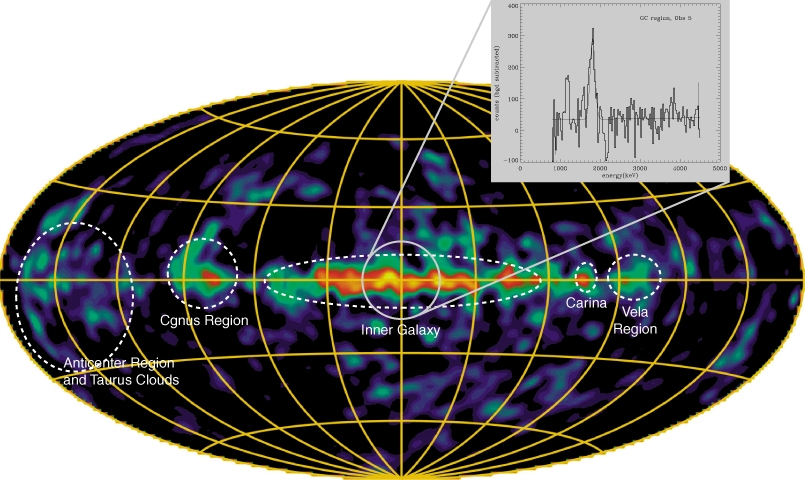
 Credit: Comptel Collaboration (MPE/SRON/UNH/NASA)
Credit: Comptel Collaboration (MPE/SRON/UNH/NASA)
Mining Aluminum in the Universe
Massive stars are thought to be the factories by which most heavy elements
are created. Some elements are produced within the nuclear furnaces at the
cores of these stars; others are produced in the titanic explosions which
occur when nuclear processing stops and the star dies. Or that's the
theory. The Comptel instrument
on the Compton Gamma-Ray
Observatory has tested this theory by imaging the entire
universe in the light of 1.8 MeV gamma-rays (i.e. radiation with an
energy of 1.8 million electron
volts). These gamma-rays are predominantly produced by the decay of a
radioactive isotope of aluminum, aluminum 26, into magnesium 26. The
Comptel false color image is shown above; regions of no 1.8 MeV emission
are dark, while regions of green-red-yellow shows increasingly bright
regions of Al 26 emission. This map clearly shows that Al 26 emission is
associated with regions of massive star formation in the Galaxy, like the
Carina Nebula, the Cygnus region, and the region near the center of the
Galaxy.
Last Week *
HEA Dictionary * Archive
* Search HEAPOW
* Education
Each week the HEASARC
brings you new, exciting and beautiful images from X-ray and Gamma ray
astronomy. Check back each week and be sure to check out the HEAPOW archive!
Page Author: Dr. Michael F.
Corcoran
Last modified July 16, 2001


